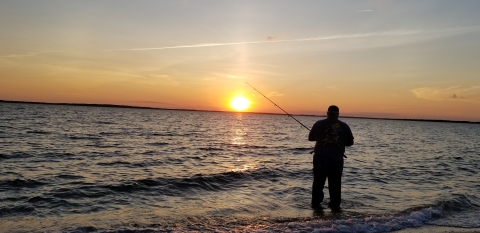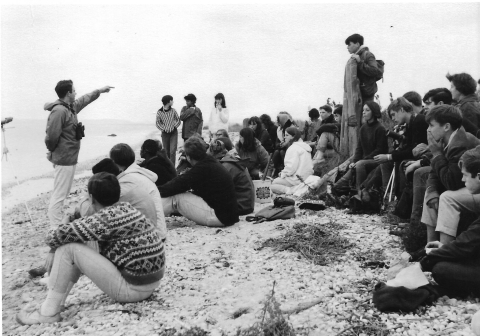Facility Activities
Fishing
Fishing is allowed from the shoreline. A free New York state salt water fishing license is required. Common fish species include striped bass, weakfish, Atlantic mackerel, flounder, bluefish, tautog, ling and eel blowfish.
Wildlife Viewing
Morton Refuge is an ideal spot for wildlife watching. Most visitors enjoy watching wildlife while hiking the Wild Birds Nature Trail. Wildlife have become acclimated to visitors and often go about their day without a second glance. Eastern wild turkeys, songbirds and chipmunks all can be seen along the wooded sections of the trail. Osprey can be seen flying overhead hunting for fish in the bay. In the winter, large groups of black ducks, bufflehead and common goldeneye can be seen floating in the bay. An elevated platform at the beach allows visitors an outstanding view of Little Peconic Bay, Noyack Bay and Jessup’s Neck Peninsula’s wildlife species.
Interpretation
Interactive, family-oriented activities are usually offered on Saturdays during the summer months. Occasional guided walks are offered during the course of the year. Please check the events web page for dates and times.
Environmental Education
Morton National Wildlife Refuge is in the process of developing a suite of curriculum-based, environmental education programs for various grade levels. Check back soon for updates.
Groups can contact our general email account to inquire about program opportunities.
Photography
As with wildlife observation, most visitors focus their cameras on the wildlife found in the forest. Yet there are plenty of photographic moments to be found on the beach too, including harbor seals in March!!




